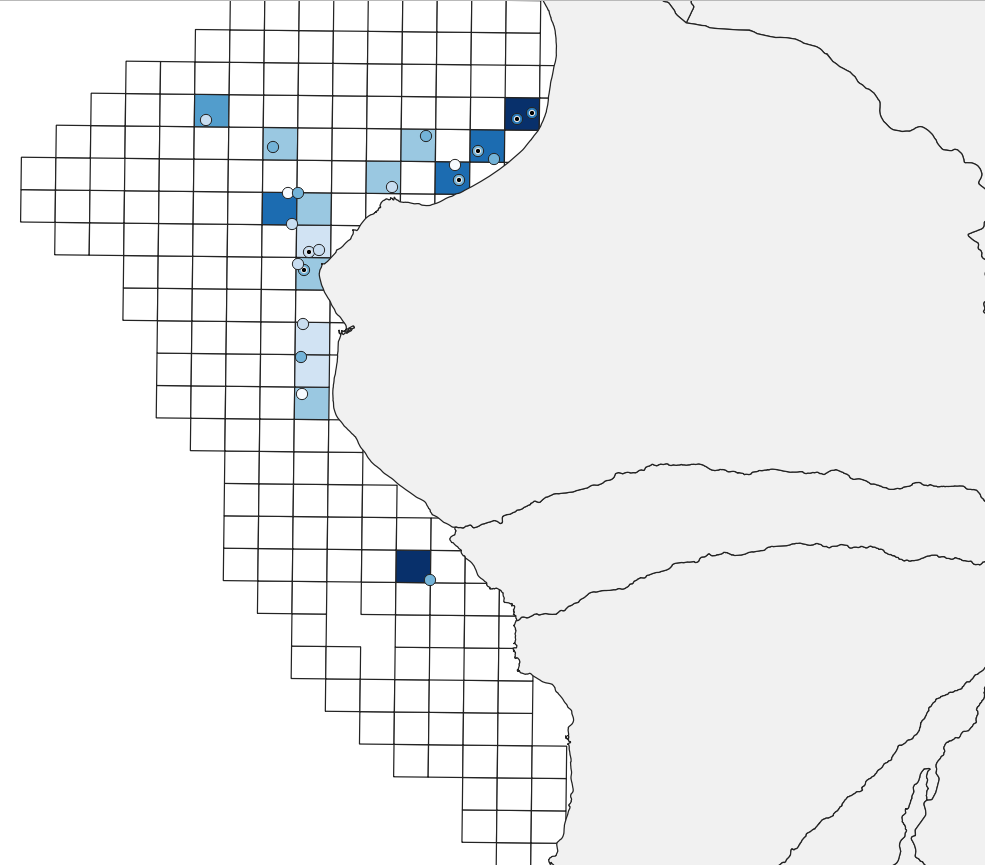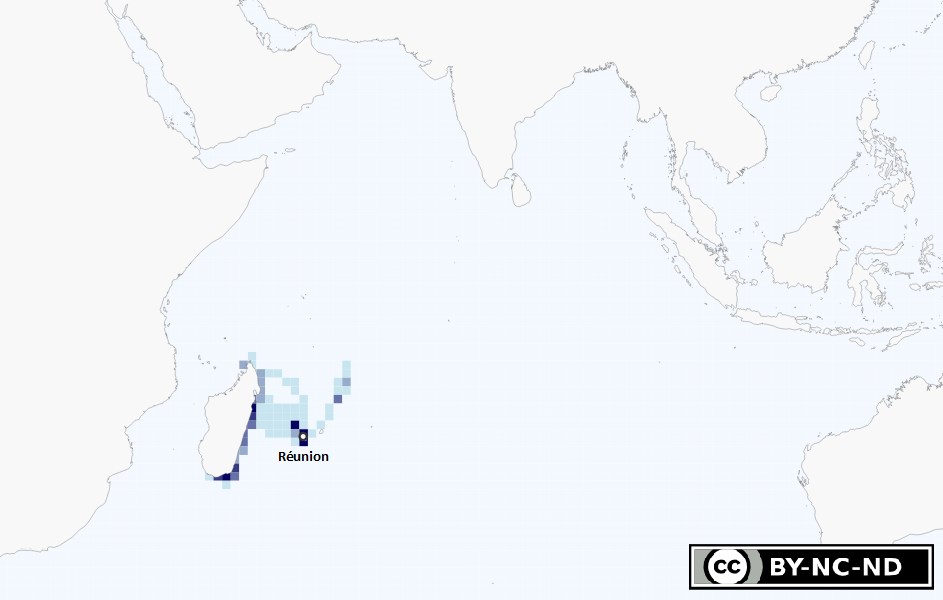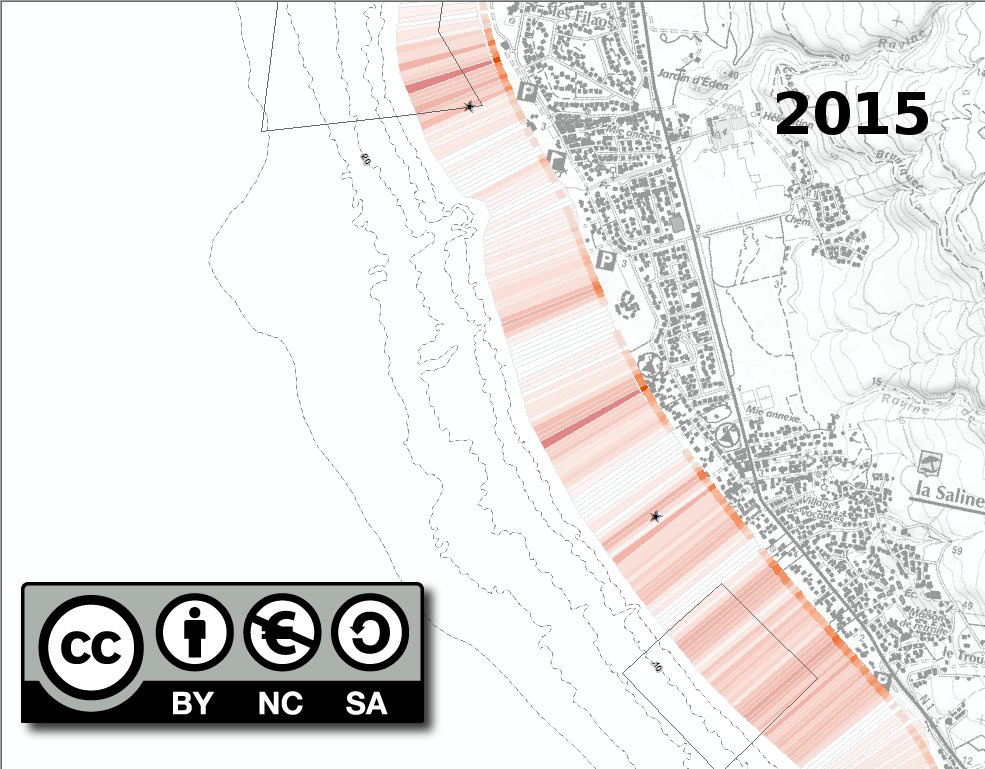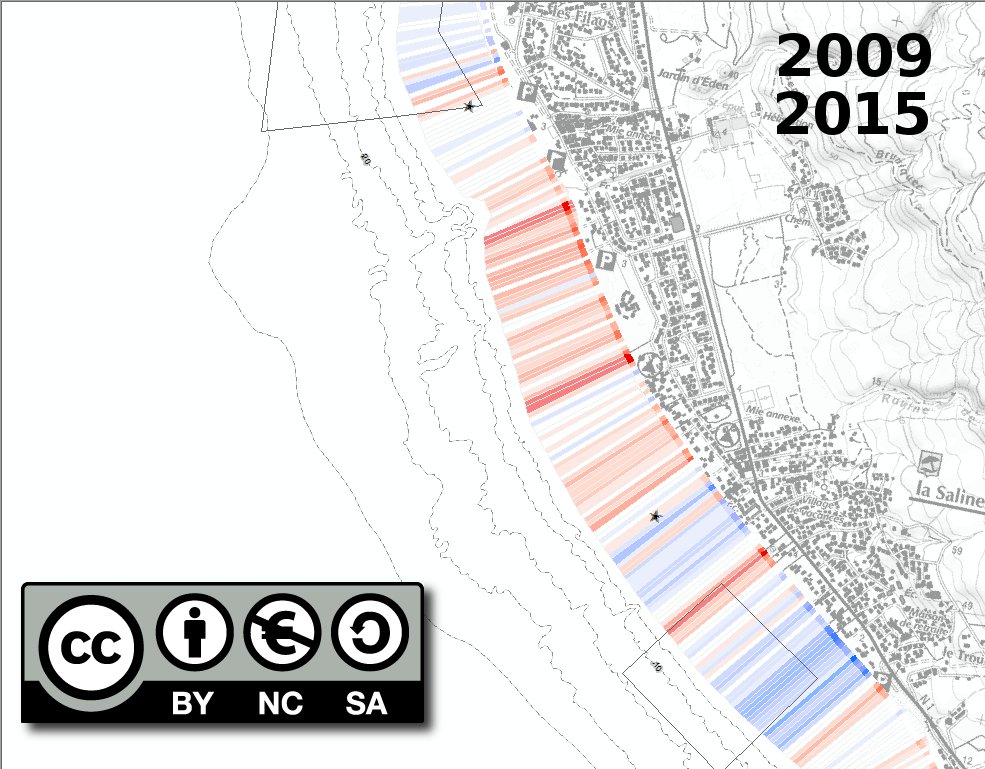Topic
biota
119 record(s)
Type of resources
Available actions
Topics
Keywords
Contact for the resource
Provided by
Years
Formats
Representation types
Update frequencies
Status
Scale
Resolution
-

Entre 2017 et 2022, l’association Centre d’Etude et de Découverte des Tortues Marines (CEDTM) est en charge de mettre en œuvre une mesure de compensation de la Nouvelle Route du Littoral MCM05 intitulée "Amélioration des conditions de quiétude des mammifères marins et des tortues marines pour la durée du chantier" et financée par la Région Réunion. Dans le cadre de ce programme, des sorties régulières en bateau sont réalisées pour non seulement répertorier les observations des mammifères marins et tortues marines mais également pour sensibiliser les usagers de la mer. Ici deux couches par année d'observation sont disponibles, une couche point permettant de répertorier toutes les observations du Dauphin long bec (Stenella longirostris) ; une couches polygone, correspondant à un maillage de 1 km de côté et permettant de visualiser les observations du Dauphin long bec en fonction de l'effort d'échantillonnage.
-
Cartographie des positions des observations des différentes espèces de cétacés autour de l'île de La Réunion en 2015
-

Ces données représentent les clades génétiques de tortues vertes, c'est-à-dire des regroupements d'haplotypes formant un même groupe. On regarde la proportion des différentes clades en fonction des principaux sites de reproduction : Europa, Glorieuses, Juan de Nova, Mayotte, Mohéli, Mozambique, Tromelin, Iranja, Farquhar, Aldabra, Cosmoledo, Amirantes et Granitics. Ces données sont issues du projet "génétique tortue" porté par Kélonia/Ifremer.
-
Cartographie des positions des observations des différentes espèces de cétacés autour de l'île de La Réunion par année.
-

Les données acquises entre 1998 et 2012 par balise Argos, ont été analysées pour sortir 2 localisations par jour. Le nombre de localisations de Tortues vertes balisées à Mayotte est agrégé par carré de 1° de côté. Ce mode de calcul est celui choisi dans le cadre du projet Mégafaune pour toutes les populations (une espèce, un lieu) étudiées afin de permettre l'inter-comparaison. Ces suivis post-reproduction ont eu lieu dans le cadre des projets "DYMITILE" Kelonia / Ifremer.
-

Les données acquises en 2013 par balise Argos, ont été analysées pour sortir 2 localisations par jour. Le nombre de localisations de Baleines à bosse balisées à La Réunion est agrégé par carré de 1° de côté. Ce mode de calcul est celui choisi dans le cadre du projet Mégafaune pour toutes les populations (une espèce, un lieu) étudiées afin de permettre l'inter-comparaison. Les données ont été acquises dans le cadre du programme MIROMEN (MIgration ROutes of MEgaptera Novaeangliae) porté par Globice, financé par la Communauté Européenne.
-

Les "entités coralliennes" constituent un indicateur spatialisé issu des données de couverture corallienne à haute résolution spatiale (40 cm) obtenues à partir du traitement des images hyperspectrales acquises en Mai 2015 (Projet HYSCORES : Ifremer/UBO/OLE) ainsi qu'en 2009-2010 (Projet Spectrhabent). Cet indicateur a été développé pour faciliter les analyses et les comparaisons spatio-temporelles.
-
Cartographie des positions des observations des différentes espèces de cétacés autour de l'île de La Réunion en 2012
-
Cartographie des fréquences d'observation des différentes espèces de cétacés autour de l'île de La Réunion par année selon une grille de maille 2kmx2km.
-

Les "entités coralliennes" constituent un indicateur spatialisé issu des données de couverture corallienne à haute résolution spatiale (40 cm) obtenues à partir du traitement des images hyperspectrales acquises en Mai 2015 (Projet HYSCORES : Ifremer/UBO/OLE) ainsi qu'en 2009-2010 (Projet Spectrhabent). Le représentation est agrégée à l'emprise de polygones de 20m de large perpendu=iculaires au traite de côte et couvrant l'ensemble de la plateforme récifale. Cet indicateur a été développé pour faciliter les analyses et les comparaisons spatio-temporelles. Les données sont diffusées sous forme de polygone ou de polylignes plaquées sur le trait de côte
